Phone: +91-9453534383
It is a group of neuromotor disorder which affect person & their family for whole life.
Cerebral palsy is a lifelong group of disorders that affect movement and posture due to non-progressive brain damage during fetal development or infancy. It primarily impacts body movement, posture, balance, muscle coordination, and motor skills. Additionally, individuals may experience challenges with sensation, perception, cognition, speech, hearing, vision, recurrent chest infections, oromotor dysfunction, and epilepsy.
The condition involves a range of neuromotor disorders that profoundly impact both individuals and their families throughout life. Motor disabilities include difficulties with sitting, crawling, standing, and walking, often accompanied by issues with balance. The exact cause of the brain damage is frequently unknown, and while the damage itself does not worsen over time, the resulting disabilities can progress, stabilize, or even improve depending on interventions and environmental factors.
Children with cerebral palsy can manifest in diverse ways in terms of severity, extent of involvement, and type of movement disorder they exhibit. A team of healthcare professionals including pediatricians, neurologists, and therapists specializes in caring for children with different types of cerebral palsy (CP). CP is typically classified into several types based on the type of movement disorder observed, most commonly spastic or dyskinetic.
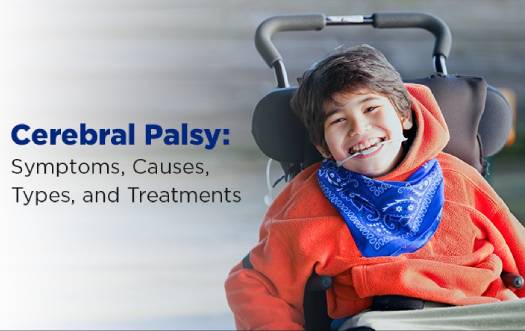
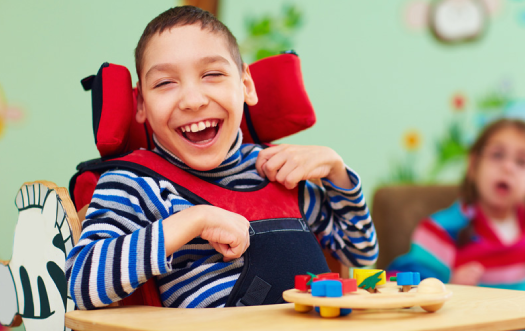
Spastic cerebral palsy is the most prevalent type, affecting 70 to 80% of children with CP. It is characterized by increased muscle tone, leading to stiff and awkward movements. Children with spastic CP may have various presentations:
Dyskinetic cerebral palsy, on the other hand, affects muscle tone throughout the body, resulting in involuntary movements that can be slow and twisting (athetosis) or rapid and jerky (chorea). This type commonly affects the whole body, except in cases of focal dystonia where the symptoms are localized to specific muscles or muscle groups. The classification of cerebral palsy types helps guide treatment strategies and interventions tailored to the specific needs and challenges of each child.
The causes of cerebral palsy can include mutations, maternal infections (like rubella or cytomegalovirus), fetal stroke, infant infections, traumatic head injuries, and instances of oxygen deprivation during birth. While the exact cause may not always be pinpointed, medical evaluations and assessments help in understanding and managing the condition effectively.
During pregnancy, risk factors for cerebral palsy include infections such as German measles (rubella), chickenpox, cytomegalovirus, herpes, toxoplasmosis, syphilis, exposure to toxins, Zika virus infection, and other maternal health conditions. Factors during infancy that increase risk include bacterial meningitis, viral encephalitis, severe or untreated jaundice, and other illnesses. Additionally, breech births, complicated labor or delivery, low birth weight, multiple births, premature birth, and Rh blood type incompatibility between mother and child are common risk factors.
Complications associated with cerebral palsy include muscle weakness, stiffness, poor coordination between the brain and muscles, contractures (shortening of muscles), nutritional challenges, mental health conditions, lung diseases, neurological issues, osteoarthritis, osteopenia, and eye muscle imbalances. These complications necessitate ongoing management and care.
While cerebral palsy is not curable, the focus of treatment is to enhance quality of life, manage disabilities effectively, and improve capabilities. Treatment options include medications, therapies (such as physical, occupational, and speech therapy), and in some cases, surgical interventions to correct severe deformities. Organizations like Trishla Foundation provide specialized care and have successfully treated numerous children from various countries, becoming a leading NGO in cerebral palsy treatment in India.
Cerebral palsy is a neuro-motor disorder caused by non-progressive brain lesions. It primarily affects posture and movement but is often accompanied by various other medical challenges. Children with cerebral palsy may experience difficulties in behavior, vision, hearing, speech, communication, and sleep. Additionally, they might face issues such as seizures, swallowing difficulties, constipation, drooling, cognitive impairment, and weakened immune function. The presence and severity of associated disorders can vary significantly among individuals, influenced by several factors. Identifying and managing these concurrent issues is crucial for comprehensive care.
Drooling and recurrent infections are among the most prevalent issues in children with cerebral palsy, followed closely by seizures. Convulsions occur in over 50% of cases, particularly in those severely affected, and can manifest in various forms, each requiring specific cerebral palsy treatments and care plans. Effective management typically involves medications and regular medical monitoring.
Many children with cerebral palsy also experience gastrointestinal problems, such as swallowing difficulties, regurgitation, heartburn, indigestion, and constipation. Addressing these issues often necessitates dietary adjustments and maintaining proper posture and muscle tone. Growth disturbances are common, with some children being obese while others are undernourished.
Vision problems in cerebral palsy include conditions like squint, cortical blindness, and refractive errors, significantly impacting their quality of life. Cognitive impairment severity ranges from mild to severe, affecting attention, emotions, psychological well-being, memory, and recognition.
Due to impaired immunity, these children are prone to recurrent infections, particularly of the upper and lower respiratory tracts, which can sometimes be life-threatening. Approximately 25% of children may also experience emotional and behavioral challenges, especially those with severe physical and intellectual disabilities.
Unchecked drooling increases the risk of upper respiratory tract infections and skin ulcers. Speech issues can arise from tone abnormalities, movement disorders, or hearing impairments associated with cerebral palsy. Mental retardation affects more than 40% of children, often masking their intelligence due to physical limitations and reduced social interactions.
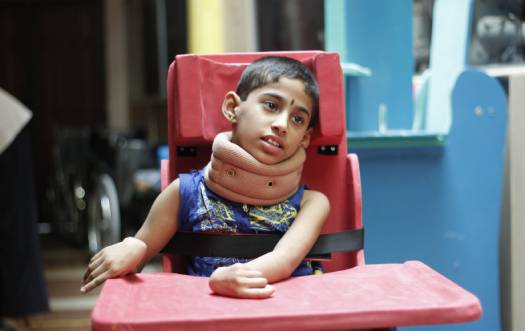
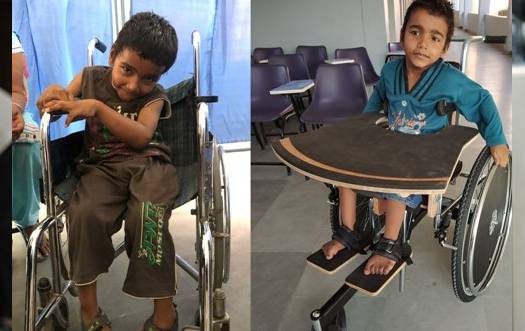
Over 10,000 children with cerebral palsy, orthopedic conditions, pediatric disabilities, limb deformities, and physical disabilities have successfully undergone treatment, enabling them to achieve independence. These inspiring stories of successful cerebral palsy treatments have been widely featured across various news channels and newspapers. Here, we present a detailed case study focusing on associated disorders and challenges faced by individuals with cerebral palsy.
According to the latest definition of cerebral palsy (modified after Bax et al., 2005), it encompasses a group of permanent disorders affecting the development of movement and posture, resulting in limitations in activities. These conditions stem from non-progressive disturbances that occurred during the development of the fetal or infant brain.
Children with cerebral palsy primarily experience challenges related to muscle tone, gross and fine motor activities, balance, and posture. They often encounter additional issues such as sensory impairments, perception difficulties, cognitive delays, communication barriers, behavioral challenges, speech impairments, and seizures. Mental retardation is observed in approximately 30-40% of children with severe disabilities.
Symptoms of cerebral palsy vary depending on which part of the brain is affected, the age at diagnosis, the severity of the condition, and the interventions received. Diagnosis can be made as early as infancy, sometimes even by six months, through the recognition of delays in developmental milestones, abnormal muscle tone, difficulty holding the neck upright, absence of a social smile, feeding difficulties, and a history of high-risk delivery.
As children with cerebral palsy grow older, symptoms such as difficulty crawling, standing, walking, speech impairments, vision and hearing problems, behavioral issues, drooling, susceptibility to infections, nutritional challenges, seizures, and abnormal movements in the body may become evident.
The severity of cerebral palsy can range from minor issues to severe disability, including complete dependence on others for daily activities. The extent of brain damage determines whether the condition affects a specific limb or the entire body.
Different types of movement disorders may accompany cerebral palsy, depending on the location of the brain lesion. For instance, individuals with spastic cerebral palsy exhibit spasticity and fixed muscle tone patterns, while those with dyskinetic cerebral palsy demonstrate variable tone patterns.
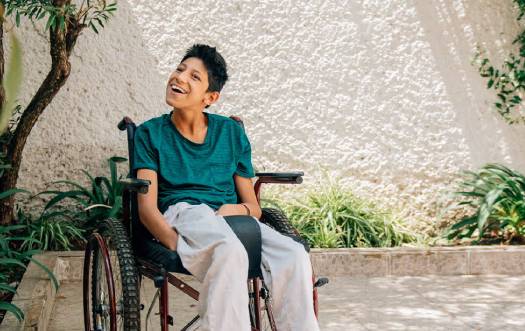
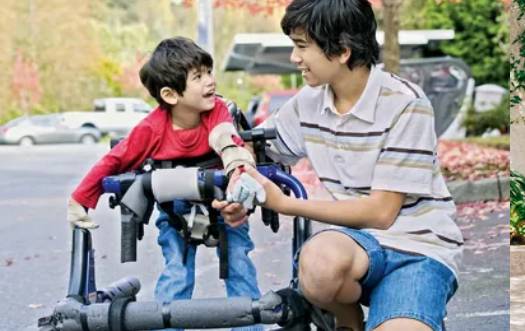
Symptoms of cerebral palsy in children include saliva drooling, difficulty with sucking, absence of a social smile directed towards caregivers, abnormal sensations and muscle tone in the body, delayed developmental milestones such as difficulty holding the neck up, crawling, walking on knees, limited use of hands, presence of epilepsy, persistence of primitive reflexes, growth delay, and microcephaly.